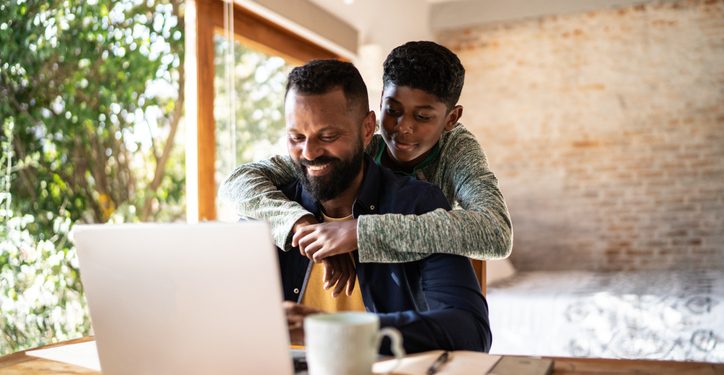Despite an Uptick in 2023, Only 32% of the Largest U.S. Companies Analyze Their Gender Pay Gaps

The start of the COVID-19 pandemic marked the start of a tumultuous period for working women. Now, after a disproportionate number of job losses and barriers to seeking work, women are heading back into the job market. The latest figures find that women’s employment has nearly recovered compared to before the pandemic, with the labor force participation rate for women aged 25-54 higher as of January 2023 compared to 2019.
Job numbers alone, however, don’t tell the full story of how women are faring in the workforce. Despite the spike in women returning to work, men continue to outearn them across all age groups.
In 2022, according to the U.S. Census’ Current Population Survey, the median earnings for women who are full-time hourly and wage workers was 83% of the median earnings for men. This marks a slight improvement compared to 81.5% in 2019, but little changed from 81% in 2005. Today, March 14, marks Equal Pay Day – reflecting how many days into 2023 women must work to be paid the same as men in 2022. And the markers for women of color, who are paid less than their white counterparts, are even later. Equal Pay Day this year is July 27 for Black women, October 5 for Latinas, and November 30 for Native women.
A range of factors contributes to the gap’s persistence, including gender-based discrimination in the workforce. In our 2022 polling, JUST Capital found majorities of Americans acknowledge a range of problems that continue to plague women in the workforce, with 70% citing the gender wage gap and 66% citing equal opportunities for advancement. Critically, 80% of Americans believe that paying men more than women who are doing the same job is tantamount to discrimination.
In the same survey, a majority of Americans (55%) agreed that companies should prioritize equal pay for equal work to help women re-enter the workforce. In light of that, and with a rise in women now returning to work, we took a look at disclosures among Russell 1000 companies on gender pay equity. We analyzed whether companies disclose conducting a gender pay equity analysis and, if so, report the results of the process in a women-to-men pay ratio.
While our polling found Americans are looking for companies to prioritize gender pay equity, our analysis found that less than one-third (32% or 302) of America’s largest public U.S. companies disclose conducting a gender pay gap analysis. And only 14% of companies (130) report the results.
Read on to explore our full analysis of what companies are disclosing when it comes to the gender pay gap, including when we found companies are more likely to report their women-to-men pay ratios and how disclosures have changed over the years.
Key Findings
- Despite the importance of “equal pay for equal work,” disclosure of pay equity analysis remains low: As of September 2022, less than one-third (32% or 302) of America’s largest public U.S. companies disclosed that they conducted a gender pay gap analysis.
- And only 14% of companies (130) are reporting the results.
- Companies are only disclosing when they are at or near parity: Nearly all of the 130 companies that disclose the adjusted women-to-men pay ratio had a ratio near 1:1. Of these companies:
- 60%, or 78 companies, reported a ratio between 0.94-0.99.
- 32%, or 42 companies, reported parity (ratio of 1:1).
- 8%, or 10 companies, reported a ratio between 1.01 and 1.12.
- Disclosure increased more this year than in the past few years:
- The share of companies that disclosed conducting an analysis increased from 23% to 32% this year, after stalling in the years prior. Specifically, among Russell 1000 companies:
- 14% disclosed from our 2019 Rankings data.
- 22% disclosed from our 2020 Rankings data.
- 21% disclosed from our 2021 Rankings data.
- 23% disclosed from our 2022 Rankings data.
- Note: While there were some methodological shifts in how we measured pay equity analysis disclosure in 2019 and 2020 – as a single data point, rather than assessing gender pay equity analyses and race & ethnicity pay equity analyses in separate data points, which we started doing in 2021 – the near identical disclosure rate in 2021 suggests that progress on this issue may have remained stalled.
- The share of companies that disclosed the adjusted women-to-men pay ratio increased from 8% (75 companies) in September 2021 to 14% (130 companies) in September 2022.
- The share of companies that disclosed conducting an analysis increased from 23% to 32% this year, after stalling in the years prior. Specifically, among Russell 1000 companies:
JUST Capital analyzes the issue of gender-based pay inequity by measuring adjusted gender pay gap analyses. An adjusted gender pay gap analysis analyzes the difference in median pay between men and women in the same position, controlling for factors like tenure, location, and education level, among others (as opposed to an unadjusted analysis which does not control for such factors). These internal company assessments are vital tools for evaluating and ameliorating the gender pay differences that exist at companies.
Our latest research suggests that disclosure surrounding gender pay gap analyses is still lagging among Russell 1000 companies. We found that only 32% (302 companies) of companies included in our 2023 Rankings currently disclose carrying out a gender pay gap analysis.
While disclosure on gender pay equity analysis among America’s largest companies remains generally low, our data suggests that companies are increasingly releasing this information publicly. When we conducted this analysis in September of 2021, just over a fifth of the companies we rank (23%) publicly disclosed that they conduct gender pay equity analyses. Only a year later, in September 2022 we found that roughly a third of our ranked universe (32%) disclose this information, which marks a nine percentage point increase in disclosure over the span of a year.

In addition to looking at company disclosures on conducting a gender pay gap analysis, we also evaluate if a company discloses the results of that analysis. Our data show that as of September 2022, 130 Russell 1000 companies, or 14%, disclose an adjusted women-to-men pay ratio, and most companies report a ratio at or near parity (1:1). Of these 130 companies, 78 (or 60%) report a ratio between 0.94-0.99 to 1, and 10 (or 8%) report a ratio between 1.01-1.12 to 1. Crucially, only 42 of these companies (32%) report parity in their adjusted pay between women and men.
Despite low disclosure of results, we noticed a similar trend of increasing transparency disclosure. In 2021, only 8% (75 companies) disclosed an adjusted women-to-men pay ratio. That rose to 14% (130 companies) in 2022, a six percentage point increase.
Though this may seem like a victory for gender pay equity, it is important to keep in mind that only 130 companies in the Russell 1000 report the adjusted women-to-men ratio, whereas 302 companies among this same group disclose conducting a gender pay gap analysis. And this does not take into consideration the 649 Russell 1000 companies that do not disclose if they conduct an analysis in the first place. We do not know what the pay ratios look like at these companies. Conducting an analysis to benchmark if and where gaps currently exist and disclosing the results, however, is key to achieving gender pay equity.

Closing the gender pay gap marks a significant opportunity for, first and foremost, women workers. By one estimate, the gender pay gap causes women to lose over $400,000 over a 40-year career, which translates into $1.6 million lost in retirement savings. It’s also costing the global economy $7 trillion, according to a new Moody’s analysis. And, crucially, companies taking action toward equal pay can help recruit and retain women at a critical juncture in their participation in the workforce.
Achieving gender pay parity involves many steps, but the first is to evaluate where a company currently stands – that means conducting a gender pay gap analysis. Our new JUST Jobs Scorecard helps companies to benchmark where they stand on gender pay equity, and other key metrics, among their peers.
To unpack your company’s pay equity performance in the 2023 Rankings and the JUST Jobs Scorecard and gain insights into how to improve on the issues that matter most to the American public, please reach out to corpengage@justcapital.com.






